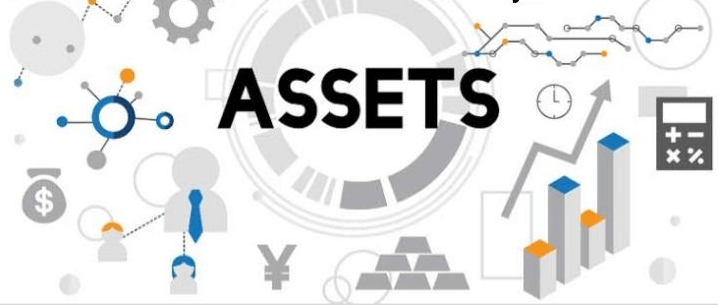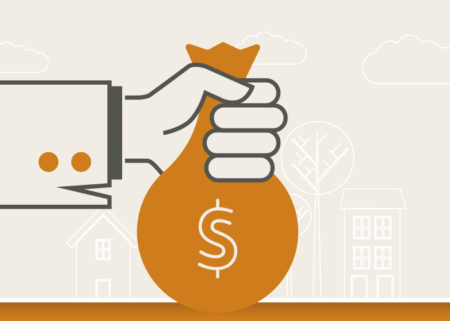Asset Definition
What is an Asset?
An asset is a resource owned by an individual or a business with economic or financial value. Assets can be tangible or intangible and classified as current or long-term. While long-term assets will remain owned by a person or company for longer than a year, current assets can be turned into income within a year.

Tangible assets are physical items that can be seen and touched, such as land, buildings, furniture, equipment, inventory, and vehicles. Intellectual property, copyrights, trademarks, trusts, and patents are examples of intangible goods. Assets are important for businesses because they provide capital to fund operations and investments. Assets can also create financial security and stability for an individual or business.
Types of Assets
- Current Assets: Current assets are anticipated to be liquidated or depleted within a year. These assets include money and money substitutes, receivables, merchandise, and paid-in-full items.
- Cash and Cash Equivalents: Cash and cash equivalents are short-term investments, such as money market accounts, certificates of deposit, and treasury bills that can be quickly converted into cash.
- Accounts Receivable: Customers' debts for delivered but unpaid products and services are known as outstanding accounts.
- Inventory: A company's inventory supplies raw materials, incomplete items, and completed goods.
- Prepaid Expenses: Prepaid expenses are paid in advance and will be used up over time. Examples of prepaid expenses include lease payments and insurance premiums.
- Long-Term Assets: Long-term assets will remain in an individual or business's ownership for over a year. These assets include investments, real estate, machinery, and immaterial assets.
- Investments: Investments are assets purchased to generate a return. Securities like equities, bonds, mutual funds, and real estate are examples of assets.
- Property, Plant, and Equipment: Property, plant, and equipment are tangible business operations assets. Land, structures, cars, furnishings, equipment, and other items are property, plant, and apparatus examples.
- Intangible Assets: Intangible assets are non-physical items, such as intellectual property, copyrights, trademarks, goodwill, and patents. Intangible assets are valuable because they can provide a competitive advantage and a source of income.

Importance of Assets
Assets may be pledged as security for debts. When an individual or business borrows money, the lender will often require collateral as an asset. If the borrower defaults on the debt, the lender can take the collateral. Additionally, assets can be used to make money. For example, a business may rent out its buildings or equipment to generate income, or an individual may lease their property to generate income.
Additionally, investments such as stocks and bonds can generate income by paying dividends and interest. Finally, assets can be used to create wealth. By investing in assets, individuals and businesses can generate returns that can be used to grow their wealth.
Advantages and Disadvantages of Assets
In the financial industry, the word "asset" refers to something with the worth that can be exchanged for money. Assets are owned by a business or individual and are categorized as either tangible or intangible.
Advantages of Asset
- Liquidity: Assets can be converted into cash quickly and easily. This allows a business or individual to take advantage of short-notice opportunities or respond to changing economic situations.
- Security: Assets serve as a form of security for a business or individual. They can be used as collateral for obtaining loans or financing.
- Leverage: Assets can be used as leverage to purchase other assets. For example, a business may use its assets to purchase additional equipment or real estate.
- Tax Benefits: Many assets provide tax advantages. For example, some assets may be depreciated over time to reduce taxable income.
- Potential Appreciation: Assets can appreciate over time. This can provide a business or individual with an additional source of income.
Disadvantages of Asset
- Maintenance: Assets require regular maintenance and upkeep to continue functioning properly and retaining value. This can be a costly and time-consuming process.
- Hazardous Assets: Some assets, such as real estate and stocks, can be hazardous investments. They can be volatile and subject to market forces that can cause their value to decrease rapidly.
- Depreciation: Assets can depreciate over time. This can reduce the amount of money a business or individual can receive when they sell the asset.
- Risk: Assets can be subject to various risks, such as theft, damage, and obsolescence. This can cause an asset's value to decrease over time.
- Limited Utility: Assets may be limited in their utility. For example, a building may only be suitable for a specific type of business. This can limit the potential buyers of the asset.
How Are Current Assets Different from Fixed (Noncurrent) Assets?
- Assets that can be turned into currency within a year are called current assets. Within a year, they should be used up or turned into currency. Current assets include cash, tradable instruments, accounts outstanding, inventory, and prepaid expenditures.
- Compared to permanent assets, current assets are more volatile. Current assets can be turned into cash more swiftly and readily than fixed assets. For example, a business can quickly sell its inventory to generate cash, whereas it may take years to recover its investments in long-term securities.
- Current assets are also more volatile than fixed assets. This means that the value of current assets can fluctuate more quickly and easily than the value of fixed assets. For example, the price of a stock can rise or fall quickly, while the value of a building may remain constant.
- Permanent (noncurrent) assets cannot be liquidated within 12 months. Property, machinery, equipment, and intangible assets like copyrights and logos are considered fixed assets, and investments in long-term securities. The company anticipates using these assets for more than a year.
- Fixed assets are more important to a business's long-term success than current ones. Fixed assets are used to generate revenue over a longer period. For example, a business may use machinery to produce goods and services, or a business may use a building to receive customers.
In summary, current assets are more liquid and volatile than fixed assets. Current assets are used to generate revenue over the short term, while fixed assets are used to generate revenue over the long term.
What Are Examples of Assets?
Examples of assets include cash, real estate, stocks, bonds, inventory, equipment, vehicles, copyrights, patents, trademarks, and goodwill.
Cash is one of the most common assets and typically refers to money in the form of currency, coins, or checks. Cash can also refer to money held in a bank account. Land and structures, such as residences, business buildings, and stores, are called real estate. While bonds are debts that businesses or states issue to generate money, stocks are shares of ownership in a firm. Inventory consists of the goods a company has on hand that it will sell. Equipment includes machines and tools used to produce goods and services. Vehicles are motor vehicles such as cars, trucks, and boats. Copyrights are legal rights to published works such as books, music, and artwork. Patents provide legal protection for inventions, designs, and processes. Through copyrights, businesses can prevent the unauthorized use of their name or image. A company's image, clientele, and other intangible assets are all included in the worth of goodwill, which is an intangible asset. For both people and companies, assets are crucial. For individuals, assets can provide financial security and be used to purchase goods and services or save for retirement. For businesses, assets are important for generating revenue and profits as they are used to produce goods and services.
Some of the Most Beneficial Assets of the 21st Century
- The 21st century has brought many new and beneficial assets to our lives. The most beneficial asset of the 21st century is technology. Technology has completely changed how we study, interact, and conduct business. We can now communicate with individuals worldwide through social media, live chat, and email. Thanks to technology's ease of access to information and amusement, we can remain informed and entertained whenever we want.
- The development of sustainable energy sources is another benefit of the twenty-first century. Renewable energy sources like solar and wind energy are helping to reduce our reliance on fossil fuels and our environmental impact. This is becoming increasingly important as the world faces the effects of climate change.
- The internet is also an asset of the 21st century. It has revolutionized how we do business, allowing us to conduct business almost anywhere in the world. It has also made it easier for people to access information and entertainment, allowing us to stay connected with our loved ones no matter where we are.
- Finally, the 21st century has seen the emergence of artificial intelligence and automation. This has allowed us to automate mundane tasks, freeing our time for more creative and productive endeavours. It has also allowed us to create complex systems to analyze data and make decisions.
We can say that, the 21st century has brought many assets to our lives. Technology, renewable energy sources, the internet, and artificial intelligence are just a few of the assets that have helped us to create a better world.
|


 For Videos Join Our Youtube Channel: Join Now
For Videos Join Our Youtube Channel: Join Now










